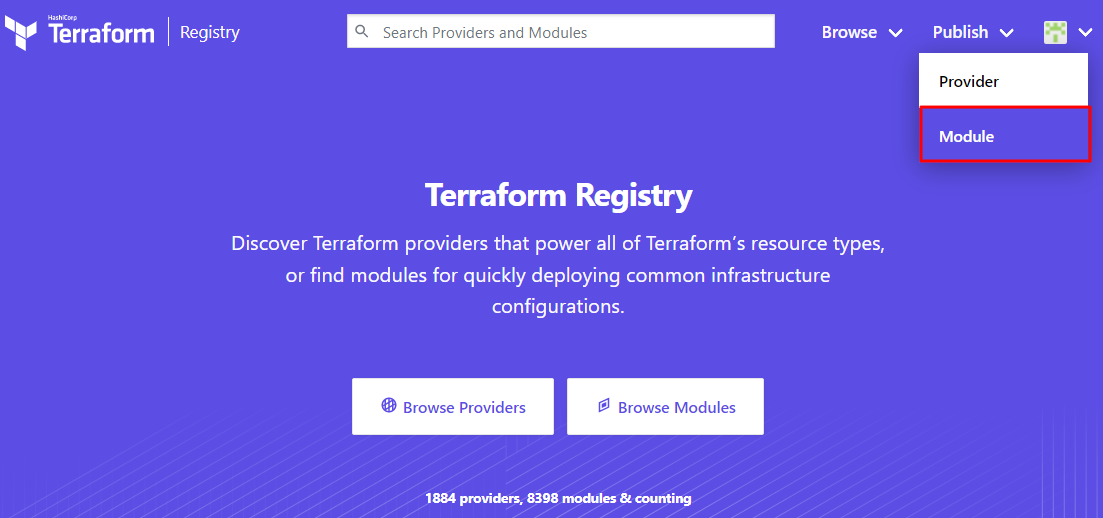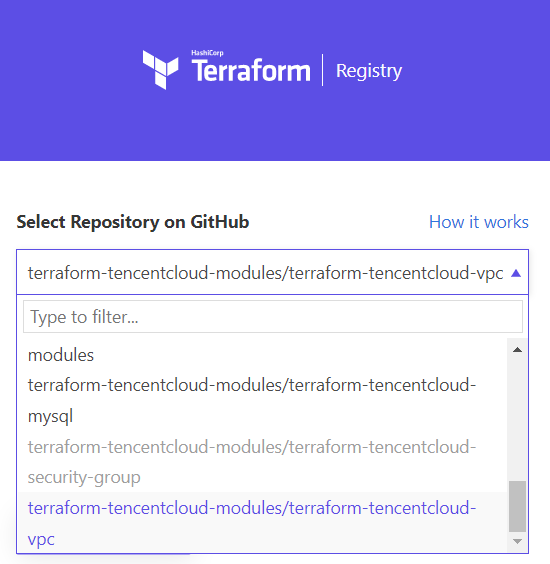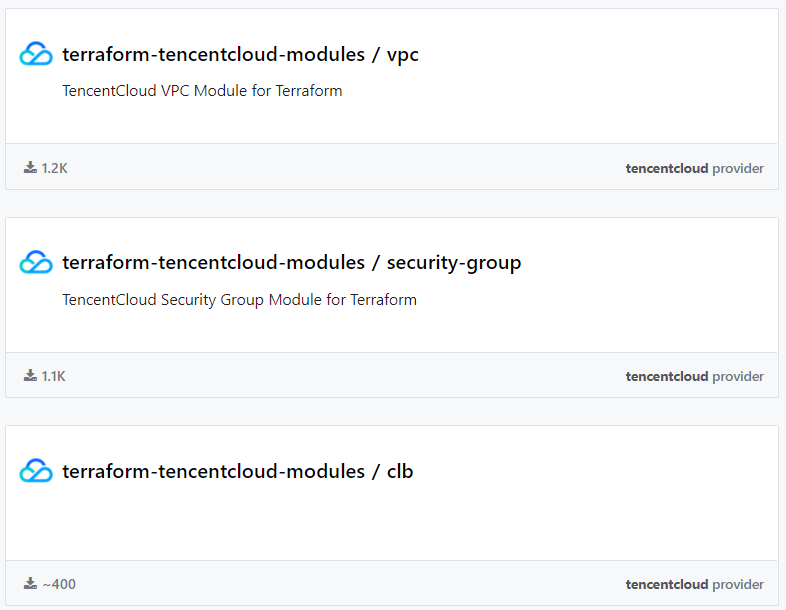Overview
Modules are Terraform configurations that allow you to manage a group of resources and can provide better business abstraction and lower costs in some multi-resource scenarios. In addition, you can publish modules on GitHub on the Terraform registry. This document describes how to create and publish a Terraform TencentCloud module.
Directions
Creating a public module
Create a code repository on GitHub.
The name should be in the format of
terraform-<provider>-<name>, such as terraform-tencentcloud-vpc.A basic module contains the following files:
. ├── main.tf # Write module resources ├── variables.tf # Declare module variables ├── outputs.tf # Declare module outputs ├── LICENCE # Declare license └── README.md # Readme
Note:
We recommend you add theexampledirectory as instructed in terraform-tencentcloud-vpc/examples to store the examples for importing and using the module.
Publishing the module
Log in to registry.terraform.io, select Publish in the top-right corner of the page, and click Module from the drop-down list as shown below:

Expand the Select Repository on GitHub drop-down list to view all the module repositories that you have management permissions for and select the target module as shown below:

Note:
You can also publish a module through a personal GitHub repository. The modules whose repositories are named in the format ofterraform-tencentcloud-<name>will also be included in the tencentcloud modules.
Select I agree to the Terms of Use. and click PUBLISH MODULE.
The repository will be automatically synced to the Terraform registry in a few minutes as shown below:

(Optional) Adding repository merge check
If your module involves multi-person collaboration, you can use GitHub Actions to preliminarily check the code with merge requests.
Here, terraform-tencentcloud-vpc is used as an example. Create the .github/workflow directory in the root directory of the repository and create the pull-request.yml file. Below is the sample code:
name: MR_CHECK
on:
pull_request:
branches: [ master ]
workflow_dispatch:
jobs:
build:
runs-on: ubuntu-latest
steps:
- uses: actions/checkout@v2
- uses: hashicorp/setup-terraform@v1
- name: Module Files Checking
run: |
files=(
LICENSE
main.tf
version.tf
variables.tf
outputs.tf
README.md
)
test -d examples || echo "[WARN] Missing ./examples in modules directory, we strongly recommend you to provide example usage of this module."
for i in ${files[@]} ; do
fileCount=$(find ./ -name $i | wc -l)
if [[ $fileCount -gt 0 ]]; then
echo "[INFO] File: $i exist."
else
echo "[ERROR] Missing $i, a recommend module should include these files:\n ${files[@]}"
exit -1
fi
done
- name: Terraform Validate
run: |
terraform init
terraform validate
- name: Terraform Format Check
run: |
terraform fmt -diff -check -recursive
The description is as follows:
Module Files Checking: Check whether the directory contains the file needed above.Terraform Validate: Check the module parameters.Terraform Format Check: Verify the Terraform code format in the module.

 Yes
Yes
 No
No
Was this page helpful?